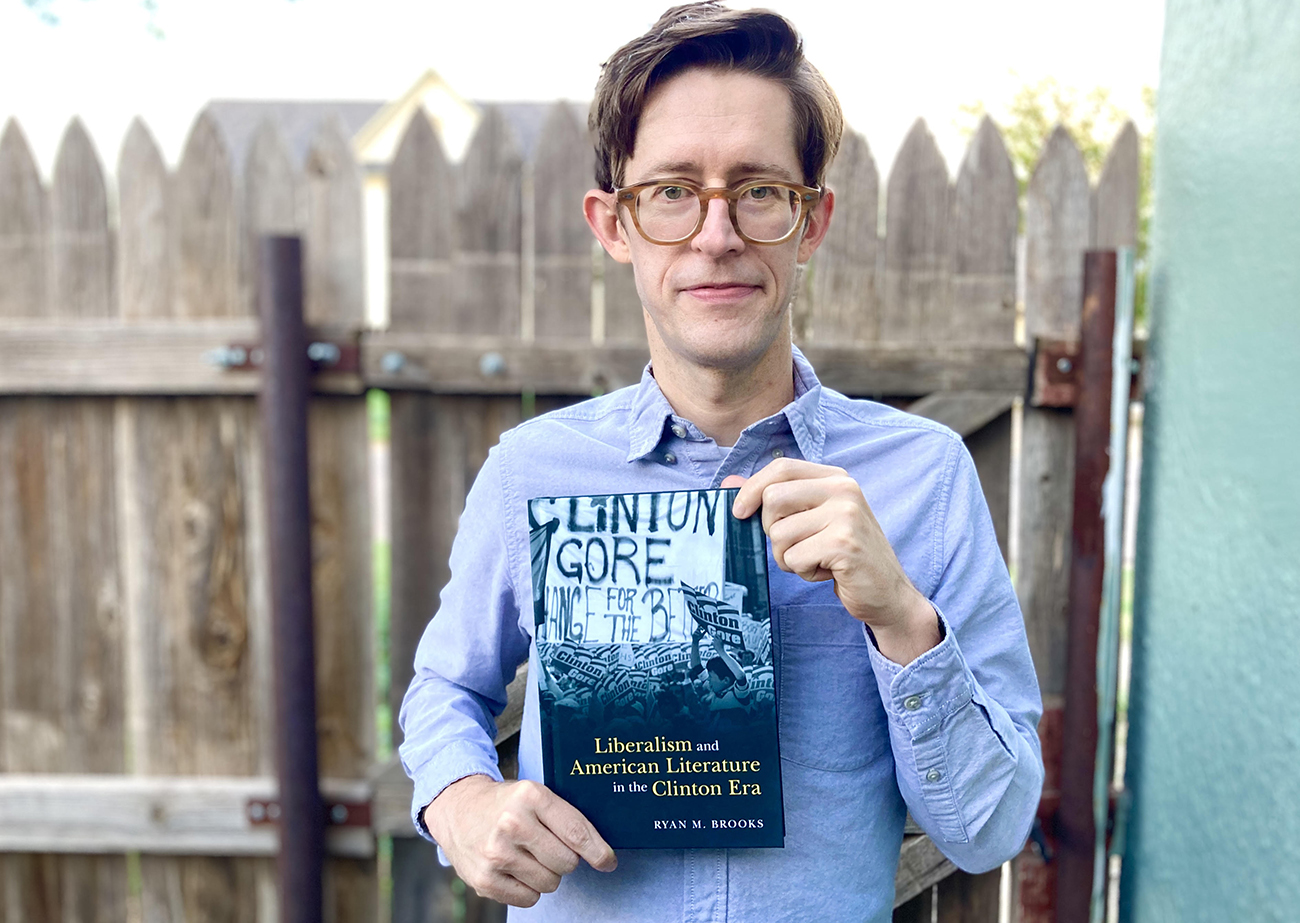- Arts
- Community
- Research
- Featured
WT Professor’s New Book Examines ’90s-Era Literature through Political Lens
Copy by Chip Chandler, 806-651-2124, cchandler@wtamu.edu
CANYON, Texas — The intersection of politics and literature is explored in a new book by a West Texas A&M University professor.
The recently released “Liberalism and American Literature in the Clinton Era” by Dr. Ryan Brooks, assistant professor of English in WT’s Sybil B. Harrington College of Fine Arts and Humanities, argues that American novelists participated in broader political transformations during the 1990s, when Democrats and other liberal groups began to embrace free-market ideas typically associated with conservatives.
“In fiction, this shift played out in the form of a new movement that self-consciously rejected postmodernism, an artistic tradition that focuses on systems and structures of power, including class structures,” Brooks said. “In this new movement, by contrast, writers tend to imagine the world as a collection of individual persons, not big social systems or structures, and when they do write about social relationships, tend to focus on things like families, communities, and networks, not classes.”
Brooks said this renewed literary interest in the personal was a response to the political consensus that emerged during the 1980s, when politicians of all stripes began emphasizing the importance of personal choice and responsibility in order to justify certain policy goals, like privatization and deregulation.
“Democratic politicians, though in a lot of ways different from Republicans, also embraced a free-market ideology,” Brooks said. “President Clinton is the one who said we would ‘end welfare as we know it’ and ‘the era of big government is over.’”
Those philosophies were reflected in the literature of that time, as art always reflects the world around it. For example, he compared John Steinbeck’s 1939 novel “The Grapes of Wrath” and Amarillo native George Saunders’ 2000 novella “Pastoralia.”
“In both, caring about other people as if they’re members of your own family is used as a symbol for solidarity,” Brooks said. “For Steinbeck, the family themes are in addition to all of this imagery of class conflict, of people getting organized and fighting back against exploitation. In Saunders, that politically charged spirit is missing, and you’re left with just having to hope that the rich will start to treat the poor like members of their family.
“It’s a very empathetic but arguably sentimental way of thinking, this hope that we can all care about each other,” Brooks said. “For Steinbeck, people had to fight.”
Brooks’ book also examines key debates of the 1990s such as welfare reform, the status of women, family values and trade as reflected in books of that era and later, including Jonathan Franzen’s “The Corrections,” Bret Easton Ellis’ “American Psycho,” Colson Whitehead’s “Apex Hides the Hut,” Sapphire’s “Push” and more.
“What readers and students need to realize is that to understand literature, you have to study it in its context, including its political and economic context,” Brooks said. “The ’90s are history now, so we need to remind ourselves of how these debates played out.”
Brooks’ work is an example of the wide-ranging research conducted by faculty and students at WT as part of its position as a regional research university, a key goal of the University’s long-range plan, WT 125: From the Panhandle to the World.
That plan is fueled by the historic, $125 million One West comprehensive fundraising campaign. To date, the five-year campaign — which publicly launched Sept. 23 — has raised about $110 million.
About West Texas A&M University
WT is located in Canyon, Texas, on a 342-acre residential campus. Established in 1910, the University has been part of The Texas A&M University System since 1990. WT, a Hispanic Serving Institution since 2016, boasts an enrollment of about 10,000 and offers 59 undergraduate degree programs and more than 40 graduate degrees, including two doctoral degrees. The University is also home to the Panhandle-Plains Historical Museum, the largest history museum in the state and the home of one of the Southwest’s finest art collections. The Buffaloes are a member of the NCAA Division II Lone Star Conference and offers 14 men’s and women’s athletics programs.
—WT—

